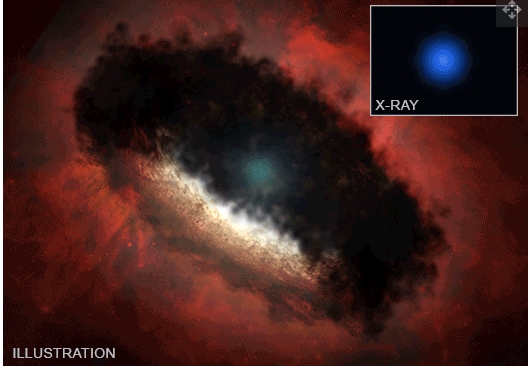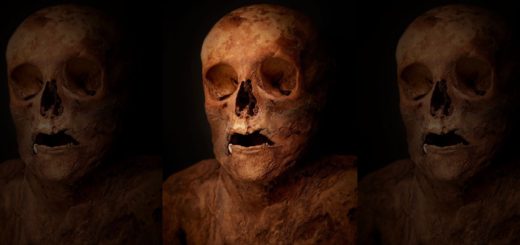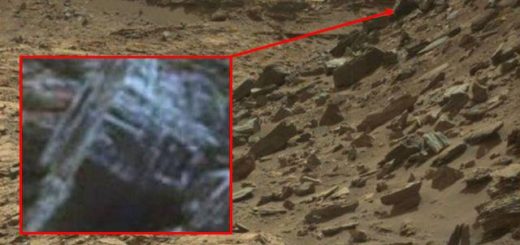Newborn star’s X-rays shine light on our solar system’s early days

In a new study, astronomers report the first detection of X-rays from a sun-like star in the earliest phase of its evolution. This discovery may help scientists explore the earliest days of our solar system and rewrite cosmic history, study team members said.
In 2017, NASA’s Chandra X-ray Observatory detected an X-ray flare coming from the very young star HOPS 383, which is the same type of star as our sun. The star, which is known as a “protostar” because it’s in the earliest phase of star evolution, lies about 1,400 light-years away from Earth and, once it has matured, will grow to have about half the mass of our sun.
In the new research, scientists studying the X-ray flare, which lasted for 3 hours and 20 minutes, gained insights that change our understanding of when stars like our sun begin emitting high-energy radiation into space.
“We don’t have a time machine that lets us directly observe our sun as it was beginning its life, but the next best thing is to look at analogs of it like HOPS 383,” lead author Nicolas Grosso, of Astrophysics Laboratory of Marseille at Aix-Marseille University in France, said in a statement. “From these, we can reconstruct important parts of our own solar system’s past.”
While scientists know that young stars more actively emit X-rays than older stars, it hasn’t been clear exactly when stars begin emitting X-rays. So, the new finding, “resets the timeline for when astronomers think sun-like stars start blasting X-rays into space,” according to the same statement.
Click here for more Space.com videos…
Researchers didn’t observe any X-rays coming from HOPS 383 outside of this X-ray flaring period. This implies that, outside of the flaring period, the object was at least 10 times fainter than when the flare was at its maximum, the researchers found, according to the statement. They also found that the flare was 2,000 times more powerful than the brightest X-ray flare that has been observed from our sun (an older, middle-aged star).
Additionally, with stars this young, there is often (as there is with HOPS 383) a “cocoon” of gas and dust that surrounds the star and falls inward toward a disk enveloping the central star. As the material falls inward, there is also an “outflow” of material exiting the young system.
Researchers observed so much outflow coming from HOPS 383 that they think the X-ray flare coming from this star could actually be powerful enough to strip electrons from atoms near the outflow’s base. They think this process could be driving the outflow via magnetic forces, according to the statement.
“If this connection between X-ray flares and outflows is correct, similar flares may have played an important role in forming our life-giving host star, the sun,” study co-author Kenji Hamaguchi, of the Center for Research and Exploration in Space Science & Technology and NASA’s Goddard Space Flight Center in Greenbelt, Maryland, said in the same statement.
In addition to better understanding the relationship between the outflows and flares, researchers think that when HOPS 383 began emitting X-rays, this sparked an energetic flow of particles that would have collided with dust grains at the inner edge of the star’s disk. If something similar to this process occurred around our sun in the earliest days of our solar system, the reaction between these particles could explain the existence and abundance of certain materials found on meteorites and here on our planet, according to the statement.
“What the sun did over 4.5 billion years ago affected the raw material that ended up making the planets and everything else in our solar system,” said co-author David Principe, of the Massachusetts Institute of Technology in Cambridge. “Any X-rays from a young sun may have played a big role in shaping those ingredients.”



 Creators of mankind
Creators of mankind Description of “Tall white aliens”
Description of “Tall white aliens” Where they came from?
Where they came from? About hostile civilizations
About hostile civilizations The war for the Earth
The war for the Earth “Tall white aliens” about eternal life
“Tall white aliens” about eternal life Video: “Nordic aliens”
Video: “Nordic aliens” Aliens
Aliens Alien encounters
Alien encounters The aliens base
The aliens base UFO
UFO Technology UFO
Technology UFO Underground civilization
Underground civilization Ancient alien artifacts
Ancient alien artifacts Military and UFO
Military and UFO Mysteries and hypotheses
Mysteries and hypotheses Scientific facts
Scientific facts


















